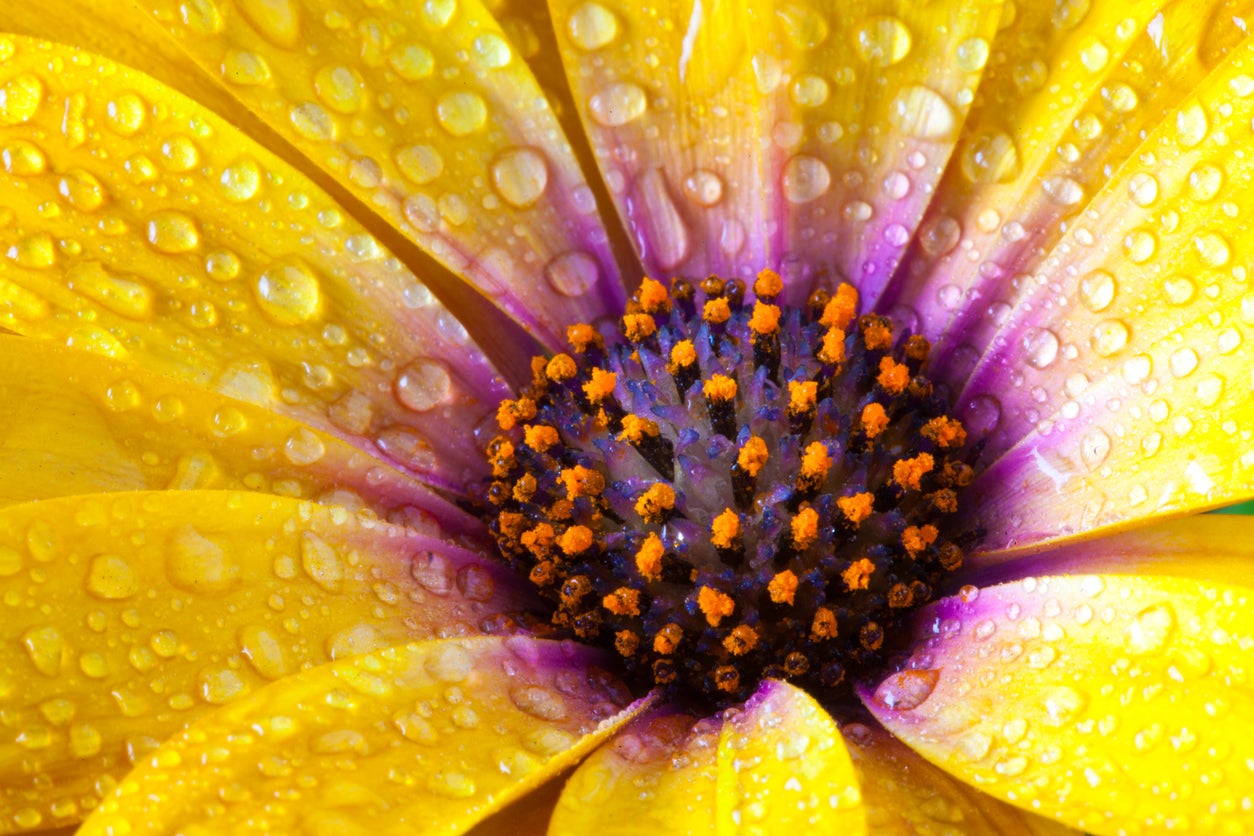Cape Marigold Water Needs – Learn How To Water Cape Marigolds


With a more vital focus on today’s water use, many drought conscious gardeners are planting landscapes that require less irrigation. In recent years, the removal of lawns as well as xeriscaping has become increasingly popular. While one may immediately consider the addition of plants such as cacti and succulent foliage, many species of flowers allow for a profusion of colorful blooms specifically suited to this growing habitat. Dimorphotheca, also known as the cape marigold, is a perfect example of a flower which thrives with minimal watering or care from home gardeners.
About Cape Marigold Water Needs
Cape marigolds are small, low-growing flowers that bloom even in arid growing conditions. Planted in spring or in fall (in mild winter areas), the small flowers range in color from white to purple and orange. Cape marigolds differ from many other varieties of flowers in that the appearance of each bloom and the overall shape of the plant improves with decreased watering. While the plants should receive some water each week, too much water will cause the plants to produce leggy green growth. This may even result in drooping flowers when in bloom. Decreased water allows for the plant to remain short and upright.
How to Water Cape Marigolds
When watering cape marigold, extra care should be taken as to avoid watering the foliage of the plant. To do so, many growers choose to use drip irrigation. Since these plants are very susceptible to fungal issues, leaf splash may be the source of development of disease. Additionally, cape marigolds should always be located in well-draining soil as a means to encourage overall healthier plant growth. As the plants begin to flower, cape marigold irrigation should become less frequent. In the case of cape marigold, water (in excess) may inhibit the plant’s ability to properly produce and drop mature seeds for the next season’s plants. Keeping cape marigold flower beds dry (and free from weeds) will help to ensure the successful reseeding of volunteer plants. While many may see this as a positive attribute, it is important to note that there has been cause for concern in regards to possible invasiveness. Before planting, always make certain to research whether or not cape marigolds are considered a nuisance plant where you live. In most cases, this information can be obtained by contacting local agricultural extension offices.
Sign up for the Gardening Know How newsletter today and receive a free copy of our e-book "How to Grow Delicious Tomatoes".

Tonya Barnett has been gardening for 13 years. Flowers are her passion. She has transformed her backyard into a cut flower garden, which she regularly chronicles on her YouTube channel http://www.youtube.com/@tonyawiththeflowers.